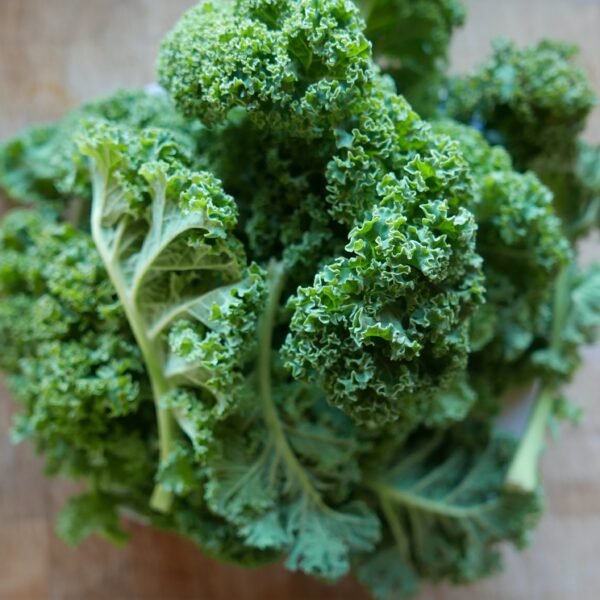
Few vegetables have achieved superstar status as rapidly and remarkably as kale. Over the last decade, it has seamlessly found its way onto restaurant menus, gracing dishes of various kinds—from soups, salads, and crisps, to smoothies, pizzas, dolmas, and even tostadas! The ubiquity of kale is undeniable, and its versatility has made it a beloved ingredient across diverse culinary landscapes.
Life-Saver, Nutritional Powerhouse and Deliciously Versatile
Kale, a cruciferous vegetable belonging to the mustard family, shares close relations with cabbage, broccoli, and Brussels sprouts. Originating in the eastern Mediterranean and Anatolia, it has been cultivated for food since 2000 BCE. Among the various brassicas, kale stands out as the closest to its wild ancestors.
Resilient like cabbage, kale’s robust leaves endure extreme temperatures while growing, making it well-suited for both hot and cold climates. Its cold-hardiness contributed to widespread popularity in Europe’s colder regions, where you can likely find “kale” on restaurant menus, transcending language barriers. In the Scottish Isles, “Kale Yards” provided shelter from harsh winds, ensuring a vital food source for families and livestock during brutal winters. Kale that was not immediately consumed was preserved in Kale Kraut.
Today, kale can be grown year-round, and its scientifically proven health benefits contribute to its widespread popularity, making it a vegetable that people simply can’t get enough of.
Kale Varieties
While you might be acquainted with only a couple of kale varieties, a diverse array exists, differing in color, texture, leaf characteristics, and nutrient composition. Here are some varieties we cultivate on our farm:
- Curly Kale: A preferred choice for both commercial growers and home gardeners, curly kale stands out as one of the most cold-hardy varieties, enduring freezing temperatures. With its thicker leaves, it’s commonly cooked and works well in soups, stir-fries, and even as kale crisps.
- Cavolo Nero (Black Kale): Also known as dinosaur or Tuscan kale, this Italian variety features dark green, blade-shaped leaves. Unlike some types, Cavolo Nero is tender, making it suitable for raw use in salads or as a flavourful addition to soups, frittatas, and other cooked dishes.
- Red Russian Kale: Sweet and tender, Red Russian kale exhibits slate green colour with dark purplish stems. When young, it’s often referred to as “baby leaf” and is particularly delightful raw. As the leaves mature, they add a delicious touch to stir-fries.
- Scarlet Kale and Redbor Kale: These varieties boast striking purple leaves and stalks, intensifying in color as temperatures drop. Enjoy their young, tender leaves in salads or cook the mature leaves for soups and grain dishes.
Regardless of the kale type you choose, rest assured that you’ll be reaping ample nutrients from this exceptionally healthy vegetable.
Cooking with Kale
Kale can be enjoyed both in its raw and cooked forms. Affordable and easy to work with, it makes for an excellent choice in everyday meals.
Raw Kale: Creating delightful salads with kale is a treat, and a simple trick to enhance its flavour and texture is massaging the leaves with salt and lemon after removing the stems and chopping it. This not only makes it easier to chew but also reduces the leaf volume, allowing you to consume more and maximise its nutritional benefits.
Here are some of our preferred raw kale recipes:
- Rachel’s Roast Jerusalem Artichokes and Kale Caesar Salad
- Kale Salad with Grilled Peach, Blue Cheese, and Tahini Dressing
- Potato, Beetroot, and Kale Salad
Cooked Kale: Embracing the cooking process with kale is a delight, as its sturdy nature withstands heat, allowing for versatile preparation. You can opt for simplicity by sautéing it or seamlessly integrating it into gratins or pasta dishes. Another great option is wilting, striking a balance between raw and fully cooked.
Consider these cooking ideas with cooked kale as a key ingredient:
- Squash Stew with Kale and Winter Roots
- Sweet Potato Baskets with Kale and Mushrooms
- Kale Gratin
- Kale and Tamarind Dahl with Roasted Cauliflower
Kale Loves
- Dairy: cheddar cheese, goat’s cheese, Parmesan cheese
- Spices & Herbs: paprika, soy sauce, balsamic vinegar,
- Fruit and Vegetables: garlic, potatoes, pears, lemon, ginger, chilli
- Savoury: smoked bacon, lamb, chicken, pasta, eggs, almonds, pinenuts, cashews